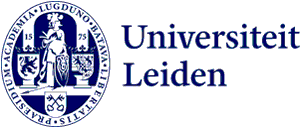
The usefulness of science: ‘Room for exchanging questions, values and ideas'
Is scientific research useful? In his dissertation, Jorrit Smit argues that in order to answer this question one should not look at, for example, prominent scholars or influential organisations, but at places where knowledge exchange and co-creation take place. Promotion 6 May.
Utility spots, that is what Smit calls such places in his dissertation. 'To research the usefulness of scientific research between 1950 and 2000, it is interesting to look at ways in which this takes shape spatially. Places are created for the relationships between science and society that are thought to lead to more socially relevant knowledge,' Smit explains. ‘But the way in which this is organised says a lot about what people consider to be useful knowledge.’
Science parks
A well-known example of utility spots are science parks. ‘Everyone knows the one in Leiden, because we see it in the news almost every week now,' Smit says, referring to the Leiden Bio Science Park. There are also other examples in the Netherlands, such as the Business Technology Centre near the University of Twente. ‘It started out as a small building where recent graduates or scholars could further develop their ideas for a business. Initially, money from the municipality and banks went towards this, because they thought the promise of commercialising university knowledge would yield something. They think that science is only useful if it has immediate commercial value.’
Smit himself has a broader interpretation of the concept of 'usefulness'. ‘All sorts of local interests play a role in the decision to encourage interaction between society and the university,' Smit explains. These may be the interests of the city council, but housing shortages or employment may also play a role. ‘All these ideas about whether it is relevant or useful are part of the scientific research that scholars do.’
‘Virtual' utility spots
The conclusion of Smit's dissertation is that ideas about utility shape the practice of science, and that this is particularly evident as soon as people think that a meeting place is needed. This namely shows an important change in the relationships between university and society. ‘Before there was a science park, university administrators would talk to municipal officials, councillors, the Chamber of Commerce, companies and so on,' he says. ‘A network is then already being created in which people have a shared vision of 'useful' science. This further increases opportunities for cooperation.’ Just by talking about it, universities and society already relate to each other differently, according to Smit. He calls this 'virtual' utility spots. ‘Any scientific research, also that of the Humanities, maintains different relationships with society and can therefore be useful in different ways.'
'This is not necessarily an exchange of knowledge in terms of "I have researched this and this is the answer", but there is an exchange of questions, values and ideas. And, of course, the creation of new relationships between science and society.'
From history to the present
Smit is now affiliated to Erasmus University Rotterdam as a researcher. Over there he researches the impact of the university on society, how this can be mapped, and the effects of this on scientific practice. ‘The mission to be an impact-driven university is seen through the lens of utility spots,' Smit explains. 'In my dissertation I looked at the past and I hope to take that critical look at the present. For whom is what actually done and what consequences does this have for the research that we do?’
